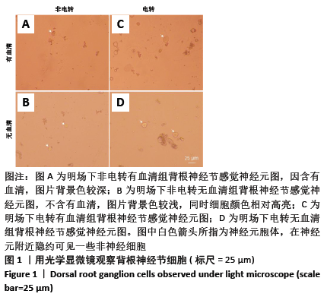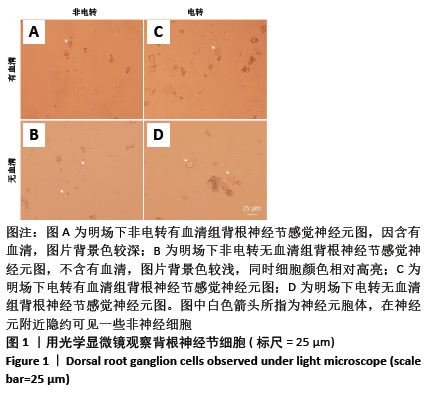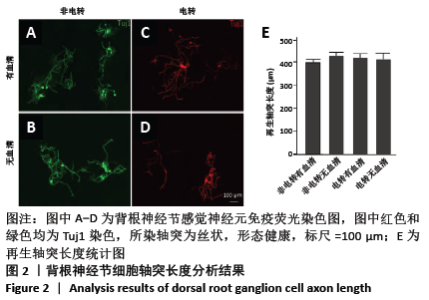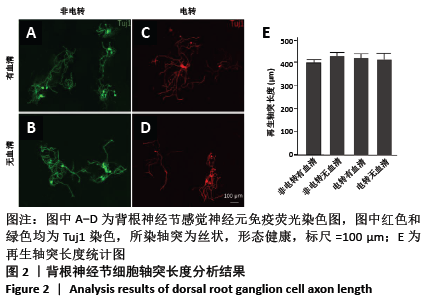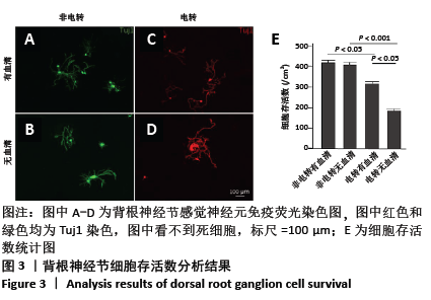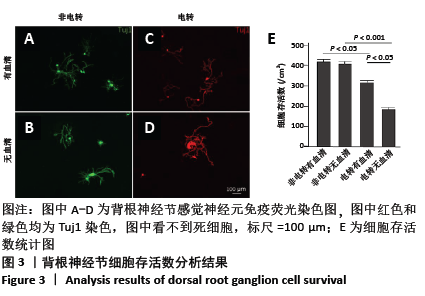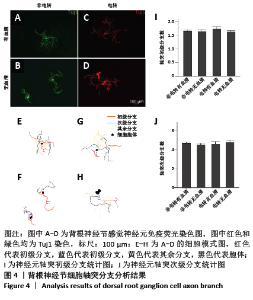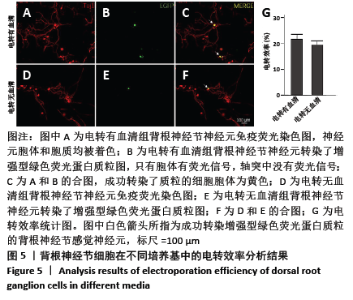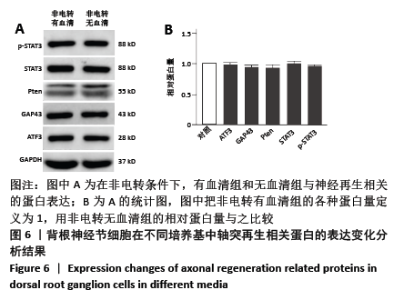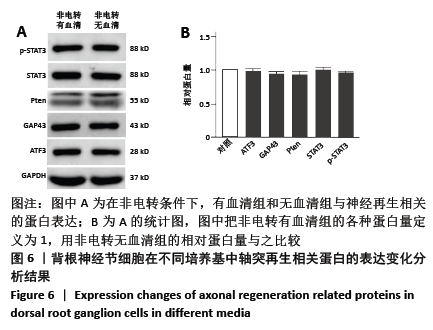[1] 董甜甜,李世刚,唐和斌,等. 小鼠背根神经节神经细胞的原代培养新方法[J]. 西安交通大学学报(医学版), 2019,40(2):302-304.
[2] SAIJILAFU, HUR EM, ZHOU FQ.Genetic dissection of axon regeneration via in vivo electroporation of adult mouse sensory neurons.Nat Commun. 2011;2:543.
[3] 韦善文,马艳霞.小鼠背根神经节取材与电穿孔转染的条件优化[J].中国血液流变学杂志,2018;28(4):377-379.
[4] SAIJILAFU, ZHOU FQ. Genetic study of axon regeneration with cultured adult dorsal root ganglion neurons. J Vis Exp. 2012;(66).
[5] 付百年,赵睿,王智宇,等. 无血清培养基与含血清培养基培养CHO细胞的比较[J].中国生物制品学杂志,2004,17(3):158-160.
[6] MA JJ, JU X, XU RJ, et al. Telomerase Reverse Transcriptase and p53 Regulate Mammalian Peripheral Nervous System and CNS Axon Regeneration Downstream of c-Myc. J Neurosci. 2019;39(46): 9107-9118.
[7] BULIC-JAKUS F, VLAHOVIC M, JURIC-LEKIC G, et al. Gastrulating Rat Embryo in a Serum-free Culture Model: Changes of Development Caused by Teratogen 5-Azacytidine.Altern Lab Anim. 1999;27(6): 925-933.
[8] WESSMAN SJ, LEVINGS RL. Benefits and risks due to animal serum used in cell culture production. Dev Biol Stand. 1999;99:3-8.
[9] VAN DER VALK J, MELLOR D, BRANDS R, et al. The humane collection of fetal bovine serum and possibilities for serum-free cell and tissue culture.Toxicol In Vitro. 2004;18(1):1-12.
[10] BRUNNER D, FRANK J, APPL H, et al. Serum-free cell culture: the serum-free media interactive online database.Altex.2010;27(1):53-62.
[11] 张松,乔自林,王家敏.无血清培养基的研究进展[J].江西畜牧兽医杂志,2018,(1):4-8.
[12] SWAMYNATHAN P, VENUGOPAL P, KANNAN S, et al. Are serum-free and xeno-free culture conditions ideal for large scale clinical grade expansion of Wharton’s jelly derived mesenchymal stem cells? A comparative study.Stem Cell Res Ther.2014;5(4):88.
[13] MA JJ, XU RJ, QI SB, et al. Regulation of adult mammalian intrinsic axonal regeneration by NF-kappaB/STAT3 signaling cascade.J Cell Physiol. 2019;234(12):22517-22528.
[14] XI F, XU RJ, XU JH, et al. Calcium/calmodulin-dependent protein kinase II regulates mammalian axon growth by affecting F-actin length in growth cone.J Cell Physiol. 2019;234(12):23053-23065.
[15] LIU K, LU Y, LEE JK, et al. PTEN deletion enhances the regenerative ability of adult corticospinal neurons. Nat Neurosci. 2010;13(9): 1075-1081.
[16] MOORE DL, BLACKMORE MG, HU Y, et al. KLF family members regulate intrinsic axon regeneration ability. Science.2009;326(5950):298-301.
[17] SAIJILAFU, HUR EM, LIU CM, et al. PI3K-GSK3 signalling regulates mammalian axon regeneration by inducing the expression of Smad1. Nat Commun. 2013;4:2690.
[18] WANG T, LI B, YUAN X, et al. MiR-20a Plays a Key Regulatory Role in the Repair of Spinal Cord Dorsal Column Lesion via PDZ-RhoGEF/RhoA/GAP43 Axis in Rat. Cell Mol Neurobiol. 2019;39(1):87-98.
[19] FAGOE ND, ATTWELL CL, KOUWENHOVEN D, et al. Overexpression of ATF3 or the combination of ATF3, c-Jun, STAT3 and Smad1 promotes regeneration of the central axon branch of sensory neurons but without synergistic effects.Human molecular genetics. 2015;24(23):6788-800.
[20] 翟梦瑶,高志强,梁英娟,等.成年豚鼠膝状神经节及螺旋神经节细胞的体外培养[J].首都医科大学学报, 2009,30(6):760-765.
[21] BURTEAU CC, VERHOEYE FR, MOLS JF, et al. Fortification of a protein-free cell culture medium with plant peptones improves cultivation and productivity of an interferon-gamma-producing CHO cell line. In vitro cellular & developmental biology Animal.2003;39(7):291-296.
[22] WANG XB, MA W, LUO T, et al. A novel primary culture method for high-purity satellite glial cells derived from rat dorsal root ganglion. Neural Regen Res. 2019;14(2):339-345.
[23] 薛丽,水克娟,吕朝军,等. 神经细胞培养方法概述[C]. 中国植物保护学会2006年学术年会,昆明:2006:256-261.
[24] 周先虎,冯世庆,刘燊,等.激活态雪旺细胞联合脐血间充质干细胞移植修复脊髓损伤的研究[J].中华实验外科杂志, 2017,34(10): 1734-1737.
[25] 陈伟,魏在荣,吴必华,等.大鼠施万细胞与成纤维细胞联合移植对大鼠失神经支配穿支皮瓣神经再生的影响及其机制[J].中华烧伤杂志,2019,35(2):134-42.
[26] 吴兰香,孙长凯,范明,等. NMDAR1单克隆抗体抑制谷氨酸诱导的大鼠海马神经元Ca2+内流[J].基础医学与临床,2007,27(10): 1109-1112.
[27] ZHANG W, HU Y, NEWMAN EA, et al. Serum-free culture of rat postnatal neurons derived from the dorsal motor nucleus of the vagus.J Neurosci Methods.2006;150(1):1-7.
[28] ALCAZAR A, CID C. High cytotoxic sensitivity of the oligodendrocyte precursor cells to HSP90 inhibitors in cell cultures.Exp Neurol.2009; 216(2):511-514.
[29] JACOB HE, FORSTER W, BERG H. Microbiological implications of electric field effects. II. Inactivation of yeast cells and repair of their cell envelope. Zeitschrift fur allgemeine Mikrobiologie. 1981;21(3):225-33.
[30] TYMANSKYJ SR, YANG B, FALNIKAR A, et al. MAP7 Regulates Axon Collateral Branch Development in Dorsal Root Ganglion Neurons.J Neurosci. 2017;37(6):1648-1661.
[31] DUN XP, PARKINSON DB. Classic axon guidance molecules control correct nerve bridge tissue formation and precise axon regeneration. Neural Regen Res. 2020;15(1):6-9.
[32] KALIL K, DENT EW. Branch management: mechanisms of axon branching in the developing vertebrate CNS. Nat Rev Neurosci.2014;15(1):7-18.
[33] GIBSON DA, MA L. Developmental regulation of axon branching in the vertebrate nervous system. Development (Cambridge, England).2011; 138(2):183-195.
[34] AOSHIMA Y,HOKAMA R,SOU K,et al. Cationic amino acid based lipids as effective nonviral gene delivery vectors for primary cultured neurons.Acs Chem Neurosci. 2013;4(12):1514-1519.
[35] 王泽,李春花,张宁坤,等.电穿孔法转染脐带华通胶间充质干细胞的最佳条件[J].中国组织工程研究,2018,22(17):2717-2721.
|
